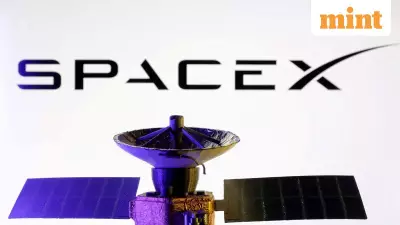
The recent surge in Nvidia's market capitalization to a staggering $5 trillion has sent shockwaves through financial markets worldwide. Many are drawing comparisons between the AI chipmaker's valuation and the economic size of entire countries, particularly India. But is this comparison valid? Let's dive deeper into what these numbers really mean.
The Apples and Oranges Comparison
When we talk about Nvidia's $5 trillion market cap, we're referring to the total value of all its outstanding shares in the stock market. This represents what investors are willing to pay for ownership in the company based on future growth expectations and current performance.
On the other hand, India's GDP of approximately $3.5 trillion measures the total value of all goods and services produced within the country's borders in a year. It encompasses the economic output of 1.4 billion people across agriculture, manufacturing, services, and every other sector of the economy.
Why This Comparison Doesn't Hold Water
Different Metrics, Different Meanings
Market capitalization and GDP measure fundamentally different things. While market cap reflects investor sentiment about a company's future prospects, GDP represents actual economic production. Comparing them is like comparing a company's stock price to its annual revenue - they're related but measure different aspects.
The Volatility Factor
Stock market valuations can be highly volatile. Nvidia's market cap has seen dramatic swings based on quarterly results, AI industry trends, and broader market sentiment. In contrast, a country's economic output tends to be more stable and grows gradually over time.
Scale and Scope Differences
Nvidia, while massive, operates primarily in the semiconductor and AI technology space. India's economy encompasses everything from street vendors to multinational corporations, from farmers to software engineers, across hundreds of industries and sectors.
The Real Story Behind Nvidia's Meteoric Rise
Nvidia's incredible valuation surge is largely driven by the artificial intelligence boom. The company's graphics processing units (GPUs) have become the gold standard for training and running AI models, putting it at the center of the global AI revolution.
Key factors behind Nvidia's success include:
- Dominance in AI chip manufacturing
- Strong competitive moat in GPU technology
- Explosive demand for AI infrastructure
- Consistent outperformance of earnings expectations
- Strategic positioning in the tech ecosystem
What This Means for Investors and Economists
While the $5 trillion figure is impressive, experts caution against reading too much into these comparisons. The more meaningful analysis lies in understanding:
Market Dynamics: How sustainable is Nvidia's current valuation given competitive pressures and market cycles?
Economic Reality: How does India's actual economic growth trajectory compare to technological innovations driving companies like Nvidia?
Global Interdependence: How emerging technologies from companies like Nvidia might accelerate economic growth in countries like India through digital transformation.
The Bottom Line
While Nvidia's $5 trillion market cap milestone is undoubtedly significant in the corporate world, comparing it to national economies like India's creates a misleading narrative. Both represent important but different aspects of global economic activity.
The real story isn't about which is "bigger" but about how technological innovation and national economic development are increasingly interconnected in our globalized world. As AI continues to transform industries, the relationship between corporate valuations and national economic indicators will remain a fascinating area for discussion among investors, policymakers, and economists alike.





